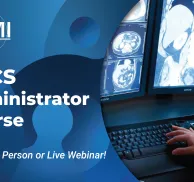The American Registry of Radiologic Technologists® (ARRT®) has implemented a process called the Continuing Qualifications Requirements (CQR), which requires registered technologists to demonstrate ongoing professional development. While the CQR program has been in effect for some time, many technologists still have questions about its requirements and how to fulfill them. This article explores the basics of the CQR program and what technologists need to know to ensure you remain in good standing with the ARRT.
What Is CQR for ARRT?
CQR (Continuing Qualifications Requirements) for ARRT is a vital component of maintaining credentials as a radiologic technologist. Its primary purpose is to ensure that technologists stay ahead of entry-level qualifications as technology and best practices improve. The CQR process assists radiologic technologists in identifying their strengths and areas for improvement, offering opportunities for professional growth. CQR applies to all registered radiologist assistants (RRAs) and radiologic technologists (RTs) who earned credentials on or after January 1, 2011. For the sake of simplicity, this article will refer to this group of professionals as "radiologic technologists" or "RTs".
This ongoing assessment involves a seamless combination of structured assessment, targeted continuing education, and documentation of clinical experience. With the CQR process, ARRT-certified radiologic technologists not only uphold a commitment to excellence but also foster a culture of continuous learning and improvement within the profession.
Why Is CQR Required?
Technologist Perspective
From a technologist's perspective, CQR is an opportunity to show where their knowledge meets or exceeds today’s qualifications and identify gaps in knowledge and skills. Technologists can use the CQR process to stay updated with the latest techniques, technology, and regulations in the field, improving their ability to provide safe and high-quality patient care.
Patient Perspective
From a patient’s perspective, CQR is important because it helps ensure their technologists have the training to provide the best possible care. When technologists stay current with technological advancements and changes in professional standards, it can lead to better outcomes for patients. Patients rely on radiologic technologists to provide accurate and effective care, and CQR helps technologists maintain current education standards to provide that care.
Can You Fail CQR?
Technologists cannot "fail" CQR but can receive a "not meeting expectations" designation. This designation means that the technologist did not meet the minimum standards for the profession. If a technologist receives this designation, they will be required to complete additional continuing education credits in order to maintain their ARRT registration. The goal of the CQR process is not to "fail" technologists but to identify areas where additional education or training may be needed.
CQR Timing & Schedule
CQR is required every ten years for radiologic technologists. The ARRT will notify technologists through their online account when CQR is due and provide information on how to complete the process. They then have a three-year window in which to complete the three steps outlined in the next section. Technologists should be aware of their CQR schedule and plan accordingly to ensure requirements are met by the deadline to maintain ARRT registration and certification.
Three Steps of the CQR Process
The CQR process includes three steps: the professional profile, the structured assessment, and prescribed continuing education. These steps are designed to ensure that technologists maintain the high standards of the profession and continue to provide patient care equivalent to the current standards of radiologic technologists.
1. Professional Profile
The professional profile is an essential part of the CQR process for radiologic technologists. It is a detailed summary of education, work experience, and professional activities. Technologists should expect this part of the process to take approximately 20 minutes.
The professional profile is comprised of three parts: a reflective exercise, a profile summary, and clinical refreshers. The reflective exercise is set up as an online survey that allows technologists to self-report how frequently they have performed various clinical procedures over the past two years. Based on the responses provided in the reflective exercise, technologists will be provided a profile summary comparing the depth and breadth of experience with others in the same role. Finally, a list of clinical refreshers is provided that allows the technologist to access free review materials regarding areas where there may be gaps in knowledge and experience.
2. SSA
The structured self-assessment (SSA) is designed to help technologists assess knowledge and skills in specific content areas related to practice. It consists of a series of questions and activities based on the current Content Specifications for the technologist's discipline. The assessment is self-paced and free, and technologists can complete it online while monitored by a proctor or at a testing center.
Because technology, regulations and patient care techniques are constantly evolving, the SSA allows technologists to compare skills and knowledge to others currently working toward earning the credential and ensure they are maintaining a high level of professional competency.
3. Prescribed Continuing Education
Should any knowledge gaps be identified during the previous two stages of the CQR process, technologists will be provided with prescribed Continuing Education (CE) learning activities. Prescribed CE is mandatory education that has been identified by the ARRT as necessary for a technologist to maintain your registration and certification. Technologists are required to complete a certain number of CE credits in specific categories. The number of CE credits required varies depending on the technologist's specialty, registration/certification, and identified knowledge gaps. Technologists should complete any prescribed CE at least two weeks before their three-year compliance period concludes to renew registration and certification.
CQR vs. Continuing Education Credits
CQR can include prescribed CE, but it is specifically determined to meet an RT’s needs after the assessment. Other required CE credits are earned by completing courses or activities that have been approved by the ARRT for biennial renewal but may not meet specific needs for CQR. Prescribed CE credits are specifically identified by the ARRT as necessary for maintaining registration and certification and ensuring that technologists are keeping current with changes in the industry.
Where to Find Your CE CQR Prescription
If you have a CE prescription, it will be described on the SSA results page via ARRT’s CQR tools and in one’s ARRT account. The website lists the number of credits required for each category and provides information on approved courses and activities. Technologists should review the requirements for each specialty, registration and certification and plan accordingly to ensure that they meet the requirements on time.
MTMI’s ARRT CQR Approved Courses
One great option for technologists to fulfill CQR CE requirements is to take programs offered by Medical Technology Management Institute (MTMI). MTMI CQR courses are an excellent opportunity for technologists to update their knowledge and skills in the field. The courses cover various topics, including CT, MRI, radiography, mammography, interventional radiology, bone densitometry, breast sonography, vascular sonography, digital imaging and radiation safety. Technologists can choose courses that align with their specialty, registration and certification, ensuring they meet the requirements. MTMI courses are also an opportunity for technologists to network with other professionals in their field, providing valuable connections and opportunities for professional growth.
MTMI programs are taught by experts with national reputations in their fields and cover each modality. MTMI’s cross-training courses, offered in the classroom and via webinars, prepare you for registry exams and take your career to the next level. Check out the full catalog of programs, or contact MTMI with questions today!






